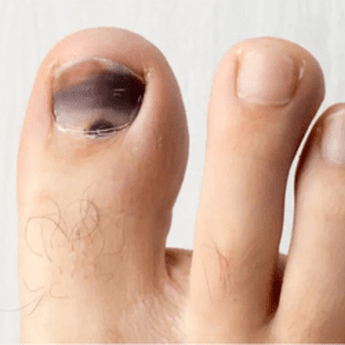Conditions Treated
Nail Discolouration
Nail discolouration refers to a change in the color of one or more fingernails or toenails. It can manifest as a variety of colors, such as white, yellow, green, brown, black, or even a combination of colors.
Lifted Nail Plate
A lifted nail plate is when a nail (nail plate) on your fingers or toes separates from the skin on which it rests (the nail bed). It typically only affects one nail.
Thickened Nails
Thickened nails, also known as onychauxis, refer to nails that have become unusually thick, bulky, or excessively large in size. This condition can affect both fingernails and toenails.
Ridged Nails
Ridges running either the length or width of the nail plate can have a number of common causes.
Splitting Nails
A split nail is usually caused by physical stress, nutrient deficiency, or wear and tear. Split nails can be a problem, especially if you work with your hands.
Although split nails are completely normal and sometimes unavoidable, there are ways you can prevent split nails in the future.
Brittle Nails
A violent toe-stubbing, dropping a heavy object on the toe or other trauma can injure the nail bed and cause the nail to grow in a deformed way. The nail may be thickened or ridged. It is a normal aging process for nails to thicken.
Deformed or brittle toenails can benefit from regular professional attention. Trimming, shaping and nail care can improve the health of your toenails and help diagnose and treat more serious nail problems.
Fungal Nail Infection
Fungal nail infections can occur in fingernails and toenails. Fungal nail infections are an extremely common, yet treatable condition which makes up about 50% of all nail problems.
Nail Trauma
A common fingernail or toenail trauma is an injury caused by a blow to the nail or by closing the finger or toe in a door or drawer. This trauma often results in blood under the nail, called subungual hematoma. Nails also can be accidentally torn or split, or splinters can get under the nail.









